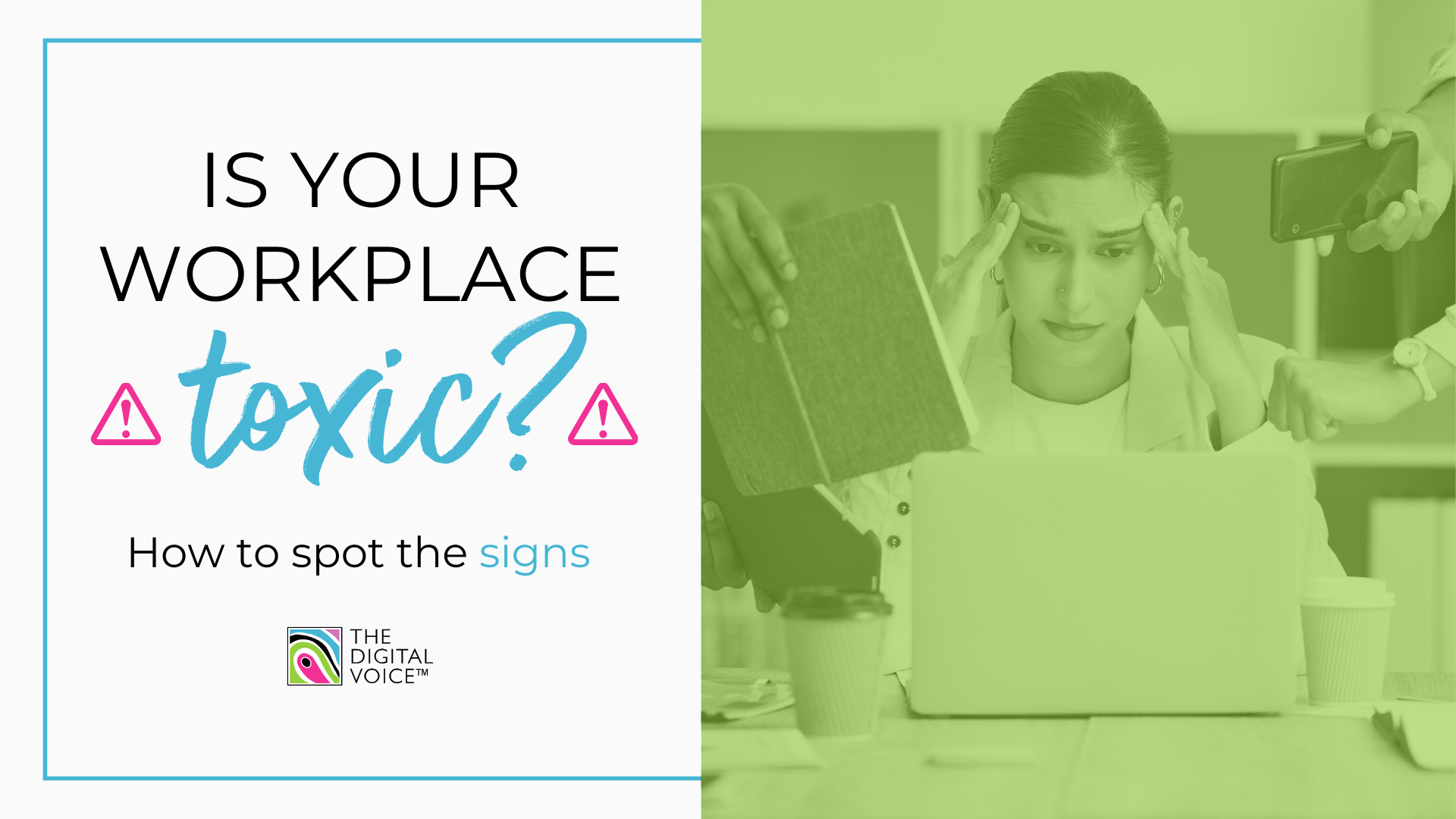Is your workplace toxic?
How to spot the signs…

Spotting toxic workplace culture and behaviour isn’t always as easy as you might think, but knowing the signs and getting the help of a mentor can help you do just that.
Toxicity in the workplace is unfortunately something many of us have experienced over the years. A 2022 Work and Wellbeing survey found that as many as 18% of people characterise their place of work as toxic, while 30% of employees experience some form of harassment over the course of their careers.
Just as worrying is that the Workforce Institute at UKG found that 70% of people say their manager affects their mental health to the same degree as their partner. Toxicity is clearly an issue for a vast number of people, but knowing how to spot the signs, and developing a plan to combat it, is easier than you might think. Let’s discuss how you do that, and how enrolling the help of a mentor is a great first step.
Defining toxicity
So how do we define toxicity in the context of the workplace? Quite simply, a workplace is toxic if its culture does not bring out the best in its people, or has a negative impact on employees.
In a healthy environment, a business and its management teams should communicate with honesty and transparency. They should care about each employee and their individual progression, and should act with empathy.
Non-toxic businesses encourage cross-discipline integration and culture, empowering employees to carry out their jobs as they see fit. These businesses invest in trust.
It’s important to remember that many organisations don’t realise they have a problem with toxicity, often because they simply don’t appreciate the ways it can manifest itself. Even neglecting to support and advance an employee’s career is a key indicator of a potential issue.
Red flags
And while a business that fails to bring out the best in its employees could have a problem with toxicity, there are other red flags too:
- Employees are overworked and experience burnout
- No clear KPIs as to what employees are working towards
- Employees have to second-guess what good looks like, and there’s a lack of feedback from management on their work
- Employees feel disempowered because management dictates how things should be done. As a result, they don’t see the value of what they’re doing
Any of the above might mean a business needs to consider the possibility that it has a toxic culture. Before we get into how employees can combat these issues, let’s take a look at how a mentor can prove invaluable for those working in a toxic business.
Mentoring
Jules Castenskiold, Head of Mentoring at Bloom, believes mentors provide a safe space to offer impartial advice for those dealing with a variety of issues. The impartial nature of the mentor/mentee relationship is key. “Listening with no agenda helps to focus, reflect and process issues,” says Jules.
She says about 80% of Bloom mentees have issues with self confidence caused by toxic workplaces. However, working with people to reframe their thinking and demonstrate that they are in control of their career - rather than a manager, for example - helps mentees realise they have choices. “It encourages people back to their authentic self,” she says.
Toxicity tips and tricks
A mentor can be a powerful ally in combating workplace toxicity because they allow conversations that alleviate the chance of a negative culture growing. Here are other tips and trick for avoiding a toxic culture:
- Self assessment is important: take time to reflect on your values and goals, and ensure they are never unnecessarily hampered or hindered in the workplace
- Document any toxicity. Be specific and practical about what you experience
- Seek support and get another viewpoint on any concerns (ideally from a mentor). Consider whether your behaviour is a contributing factor - take a 360-degree look at the problem
- When interviewing for a role in a new company, ask questions that may reveal a toxic culture. Enquire about staff well-being programs, and try to work out whether a company takes an interest in employees away from the office - does it organise charity events or company socials, for example?
- Prevention is the surest cure for toxicity, and managers have a responsibility to limit the chances of a toxic culture growing. This means not working people too hard and risking burnout. Empowering people to do their jobs in a way they see fit and working to boost staff confidence is important, because this will help a workforce to thrive.
Closing thoughts
As Jules says, empowerment is often the problem in a toxic workplace - one in which, she says, “employees can’t see how their way of doing things will make a difference”. This feeling of hopelessness is a significant factor in employee dissatisfaction.
But, it’s also important that employees take responsibility for their own behaviour, and focus on what they can change. “People should learn to recognise when they’re working to please, rather than working to be the best at their job”, she notes. Keeping this in mind will help maintain perspective and tackle toxicity.

Tommy has been writing about tech for over 15 years, making his (glamorous) debut on What Laptop? Magazine in 2007. Since then, he has written for a broad variety of publications (including The Guardian, TechRadar.com and Shortlist.com) covering a wide variety of technology, lifestyle and automotive topics.
It is Tommy’s desire to understand what helps, engages and promotes The Digital Voice’s clients that lies behind his approach to premium content creation and communications.



